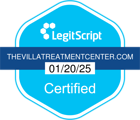Modern ecstasy addiction treatment combines intensive medical detox with personalized therapy to address both your physical and psychological dependence. You’ll undergo 24/7 medical supervision during the initial 3-5 day withdrawal phase, while receiving evidence-based treatments like CBT and DBT to rebuild emotional regulation skills. Your recovery plan includes holistic health assessments, medication management when needed, and long-term support through peer groups and community resources. Understanding the full treatment approach can help you make informed decisions about your recovery pathway.
Understanding Modern Ecstasy Detox Protocols

Modern ecstasy detox protocols primarily focus on managing the complex psychological and physiological changes that occur when MDMA use ends. You’ll undergo careful monitoring as your brain chemistry resets, with medical professionals tracking potential drug interactions and addressing withdrawal symptoms that typically peak within days of cessation. Medical providers carefully assess each case since ecstasy is often cut with substances that complicate detox.
The detox process considers critical psychosocial factors that influence recovery success. You’ll receive support for mood instability, anxiety, and depression while your brain rebuilds depleted serotonin levels. Treatment typically lasts 3-5 days during the acute withdrawal phase. Treatment settings vary based on your specific needs – from intensive inpatient care for complex cases to structured outpatient programs for those with stable support systems. Professional monitoring remains essential throughout this phase to prevent relapse and facilitate safe psychological adjustment as your body moves from functioning with MDMA to functioning without it.
Medical Supervision and Safety Measures

Professional medical supervision forms the cornerstone of safe MDMA detoxification, requiring thorough monitoring protocols and evidence-based safety measures. You’ll receive all-encompassing withdrawal symptom mitigation through 24/7 medical oversight, ensuring your safety throughout the detox process. Medical emergency preparedness protocols protect you from potential complications while trained staff monitor your critical signs and mental state continuously. Healthcare providers pay special attention to managing your neurotransmitter levels during treatment.
You’ll undergo regular assessments of your physical health, including heart rate, blood pressure, and hydration status. Your treatment team will implement personalized medication protocols to manage withdrawal symptoms. Medical specialists conduct initial comprehensive assessments to determine the severity of your addiction and create an appropriate treatment strategy. You’ll receive immediate intervention if emergency situations arise, with dedicated response plans for seizures or psychological distress. Your care plan includes strategic shifts between inpatient and outpatient settings based on your progress and safety needs.
Therapeutic Approaches in Recovery

While overcoming MDMA addiction requires medical supervision, effective recovery depends on an extensive therapeutic framework that addresses both psychological and behavioral aspects of substance use. Given MDMA’s unique effects on trust and empathy, therapy sessions focus on emotional processing abilities. You’ll engage in evidence-based treatments like CBT and DBT to develop emotional regulation skills and understand the root causes of your addiction. Leading facilities like Southeast Addiction Center Tennessee offer specialized ecstasy treatment programs.
Interpersonal dynamics play a pivotal role in recovery, which is why family therapy and group support systems are integral components of treatment. Your therapeutic odyssey will incorporate holistic interventions such as mindfulness practices and art therapy to process trauma and manage cravings. Through structured sessions, you’ll learn practical coping strategies and build a strong support network.
This all-encompassing approach guarantees you’re equipped with the tools needed for sustained recovery and reduced risk of relapse.
Personalized Treatment Planning
Successful recovery from ecstasy addiction begins with a thorough, individualized treatment plan that addresses your unique circumstances and needs. Through comprehensive health assessments, your treatment team evaluates your substance use history, medical conditions, mental health status, and environmental factors to develop customized treatment modalities that align with your recovery goals.
Your initial diagnostic evaluation includes detailed substance use patterns, triggers, and co-occurring disorders. Your treatment team may recommend antidepressant medications to help manage withdrawal symptoms during detox. Genetic factors will be considered when determining your treatment approach.
Treatment components are selected based on evidence-based practices, incorporating CBT, behavioral therapies, and holistic approaches.
Regular progress reviews guarantee your treatment plan adapts to your changing needs and response to therapy.
Integration of physical health management, mental health treatment, and community support optimizes your recovery potential.
Your treatment plan remains flexible, allowing for adjustments as you progress through different phases of recovery.
Long-term Support and Relapse Prevention
Long-term recovery from ecstasy addiction depends on establishing extensive support systems and proven relapse prevention strategies. You’ll need to engage in behavioral therapies like CBT and DBT while building a strong community support network. When seeking professional help, many patients benefit from residential treatment programs that provide 24/7 medical monitoring and therapeutic support.
| Support Type | Key Components | Benefits |
|---|---|---|
| Therapeutic | CBT, DBT, MI | Addresses triggers and cravings |
| Community | 12-Step Programs, Peer Groups | Social integration, accountability |
| Clinical | Medication-Assisted Treatment, Regular Check-ins | Medical stability, monitored progress |
Your recovery endeavor requires active community engagement through peer-led groups and volunteer opportunities. Combining these with structured aftercare plans and ongoing outpatient therapy enhances your chances of sustained sobriety. You’ll develop essential coping skills while rebuilding healthy lifestyle patterns through stress management techniques and lifestyle skill building activities. Remember to maintain your emergency contact list and utilize crisis response resources when needed.
Frequently Asked Questions
What Insurance Providers Typically Cover Ecstasy Addiction Treatment Programs?
Most major insurance providers, including Aetna, Blue Cross Blue Shield, and employer-sponsored plans, cover ecstasy addiction treatment. You’ll find these programs typically covered under your plan’s substance use disorder benefits.
Your prescription drug plans often include medications for withdrawal and recovery. While in-network facilities offer the best coverage, you’ll still have out-of-network coverage options, though with higher costs. Contact your provider directly for specific coverage details.
Can Family Members Participate in the Treatment Process?
Yes, you can actively participate in your loved one’s recovery through diverse family-focused programs. Treatment centers typically offer family counseling sessions where you’ll work with therapists to address relationship dynamics and develop communication strategies.
You can also attend group support meetings designed specifically for families affected by addiction. These programs help you understand the recovery process, establish healthy boundaries, and learn effective ways to support your loved one’s treatment pathway.
How Long Does It Typically Take to Fully Recover From Ecstasy Addiction?
Your recovery duration from ecstasy addiction typically spans several months to a year. The acute withdrawal phase lasts 2-3 weeks, but complete healing takes longer.
Treatment duration varies based on your usage history, comprehensive health, and whether you’ve used multiple substances. You’ll experience gradual improvement, with physical symptoms resolving preliminarily, followed by emotional stabilization.
Your dedication to treatment and lifestyle changes considerably influences your recovery timeline.
Are There Specialized Treatment Programs for Lgbtq+ Individuals With Ecstasy Addiction?
Yes, there are specialized treatment programs designed specifically for LGBTQ+ individuals struggling with ecstasy addiction. You’ll find dedicated support groups that address unique challenges faced by the LGBTQ+ community, including minority stress and identity-related trauma.
Many programs offer gender-affirming counseling and culturally competent care from trained professionals. These specialized treatments recognize the higher rates of substance use disorders in LGBTQ+ populations and provide extensive care that’s sensitive to your specific needs.
What Percentage of People Successfully Maintain Sobriety After Completing Treatment?
Based on available data, you can expect varying long-term outcomes after treatment completion. Studies show approximately 76% maintain sobriety at 3 months, dropping to 69% at 6 months and stabilizing around 70% at 9 months.
Treatment effectiveness depends heavily on your individual circumstances, support system, and continued care engagement. While specific ecstasy-related statistics are limited, these success rates align with general substance use recovery patterns across different treatment programs.






